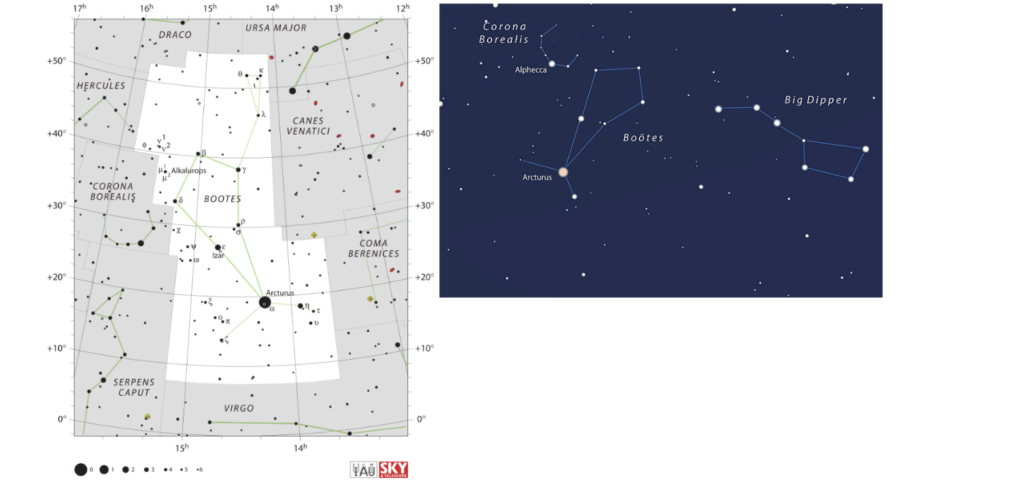June 2023
As in May, Venus continues as the dominant bright light in the evening sky this month (other than the moon). Just look to the
west at sunset and it’s easy to see! Venus will be about 50% illuminated early in the month. By the end of June, Venus will be
in a crescent phase about 25% illuminated, but because it’s then closer to the earth, it’s diameter will appear to increase and
it’s brightness won’t diminish! You’ll need a pair of strong binoculars to see the phases of Venus, but you can do so by
stabilizing your binos on a post or on a car.
Here are some other June sights. All are at night except for the event on June 14.
Early in June: Venus will be seen near the Beehive star cluster (M44) and reddish Mars will be nearby. Both the star cluster
and Mars are considerably dimmer than Venus!
June 12 & 13: Venus passes just north of M44. It will be a great sight in binoculars; strong magnification would be helpful.
June 14: The waning crescent moon and Jupiter rise together in the very early morning, before sunrise. There are only two
degrees that separate the two. Both will be easily seen together in a pair of binoculars.
June 21: The lunar crescent will form a nice right triangle with Venus and Mars after sunset.
June 22: The moon “visits” the constellation of Leo the Lion. The moon will be about 5 degrees (the width of your fist at
arm’s length) to the right (east) of Regulus, the brightest star in Leo.
The constellation of Bootes is fun to find in the night sky all month long. It will be high in the sky. The last three stars in the
handle of the big dipper “arc” toward the bright star Arcturus, the brightest star in Bootes. Arcturus is also the fourth
brightest star in our entire sky and the brightest one visible right now. Arcturus in one of the large stars in the night sky, but
it’s diameter is much smaller than that of Antares, that is also visible in tonight’s sky.
Antares is a Giant Red star in Scorpius, with a diameter that is considerably bigger than the orbit of Mars. See the pictorial
below to compare the sizes of our sun, Arcturus, and Antares. Antares has a definite reddish hue and will be low in the
southern sky.
The constellation of Bootes, with it’s bright star Arcturus is shown below. Arcturus was known as the “Guardian of the bear”
in Greek mythology.

